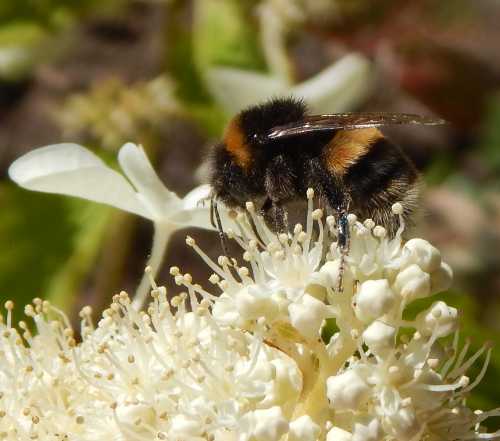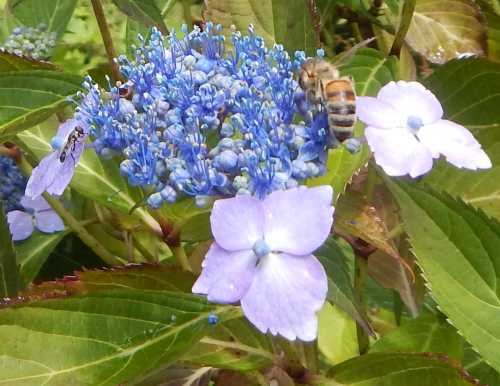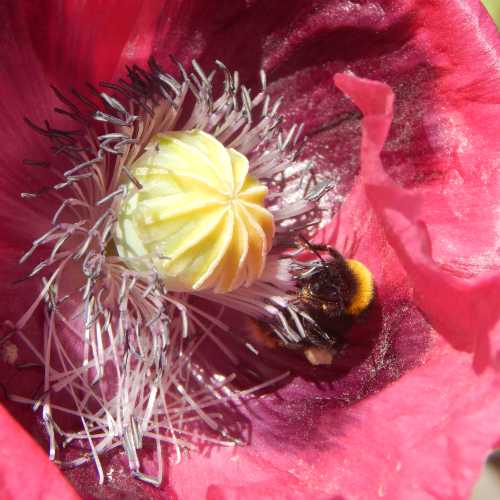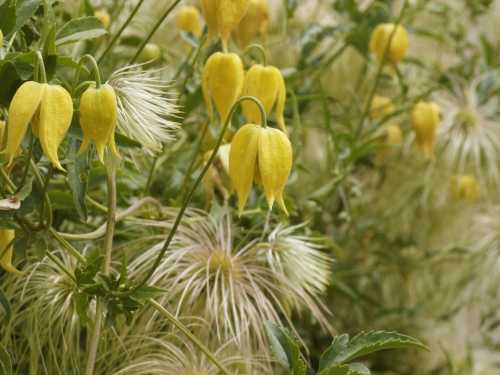Do Bees Like Hydrangeas?
Uploaded: 15th February 2021
Do bumble and honey bees like hydrangea flowers? The answer is: they like some varieties and cultivars, and not others. Some hydrangeas are good for bees and other pollinators, but this is not true of all varieties.
Therefore, it is necessary to select your hydrangea specimen carefully if you want to attract bees into your garden. The same varieties popular with honey bees and bumble bees are likely to be visited by at least one or two solitary bee species.
Which hydrangeas do bees like?
If you want to select a hydrangea shrub that will be popular with bees, you are really looking at specific cultivars from Hydrangea paniculata, or select from one of the climbers, Hydrangea anomala or lace caps.
Hydrangea paniculata

Not all Hydrangea paniculata cultivars are visited by bees, so be sure to check.
I have Hydrangea paniculata 'Confetti' in my garden, and find it is especially attractive to bumble bees. I have it growing in my border. It's a beautiful shrub, and features lovely, loose flower heads and the shrub has a soft, informal appearance in comparison to some of the very compact ornamental hydrangeas that grow flower heads in neat round ball-shaped bunches (the 'mop head' type).
If you want white or cream flowers or greenish-white, you could also try:
- ‘Kyushu’
- 'White Moth'
- ‘Floribunda’
- ‘Brussels Lace’
- 'Praecox'
- 'Greenspire'.
If you are looking for pink, or a blush of pink (even if only later in the flowering period):
- ‘Big Ben’
- Dart's Little Dot
- Early Sensation
- 'Dharuma'
- 'Floribunda' (becomes pink-tinged with age).
Climbing hydrangea - Hydrangea anomala
Growing vertically by using climbing plants and shrubs, can help maximize growing space.
Climbing hydrangeas tend to be vigorous, so you'll need plenty of space and sturdy support. Bee friendly hydrangeas from this group include:
- Hydrangea anomala subsp. petiolaris
- Hydrangea anomala subsp. petiolaris 'Silver Lining'
- Hydrangea anomala subsp. petiolaris 'Mirranda'
- Pink or pink tinge (sometimes with age): Hydrangea anomala subsp. glabra 'Crûg Coral'.
Lace cap hydrangeas
 Honey bee and hoverfly foraging on Lacecap Hydrangea macrophylla ‘Blue Wave’.
Honey bee and hoverfly foraging on Lacecap Hydrangea macrophylla ‘Blue Wave’.Having flatter heads than the 'mop heads' type, I'm aware that a number of lace caps feed the bees, but not all specimens do.
However, I have seen lots of bees foraging on Lacecap Hydrangea macrophylla ‘Blue Wave’ pictured here. I hope to update this page with other cultivars in future.
Which hydrangea varieties should you avoid?
If you are keen that your planting choices help bees and pollinators, then some hydrangeas are best left out of the garden.
As a general rule, Hydrangea macrophylla hortensis (French hydrangeas) are of no benefit to pollinating insects, since the flowers are not fertile and no food reward is offered to bees.
These are the varieties showing compact round 'mop-head', ball shaped blossom heads, and no visible flower anthers.
From personal observation, at most, the inexperienced foragers may land, but quickly fly off again, or rest, but do not feed.
However, it's best to focus on specific varieties known to be popular with bees, because even some of the varieties with 'looser flower heads' are not especially beneficial to pollinators.
Create a
lawn for bees

